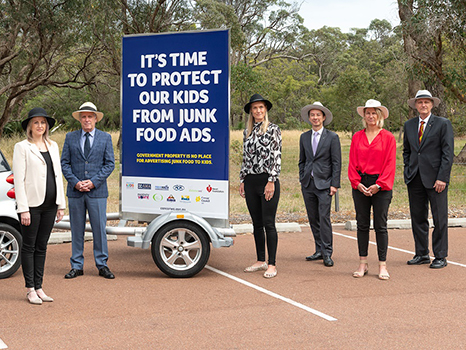Search

News & Events
WA’s top health experts call for immediate action on junk food advertising on government propertyWA’s leading health agencies have joined forces to call on the State Government to immediately end junk food advertising on government property.
Research
Maternal work hours in early to middle childhood link to later adolescent diet qualityPrevious studies on maternal work hours and child diet quality have reported conflicting findings possibly due to differences in study design, lack of a...
Research
Maternal and umbilical cord androgen concentrations do not predict digit ratio (2D:4D) in girls:Digit ratio (2D:4D) is widely used as a marker of prenatal androgen exposure
Research
Hepatic iron loading in mice increases cholesterol biosynthesisIron and cholesterol are both essential metabolites in mammalian systems, and too much or too little of either can have serious clinical consequences
Research
Modern and traditional diets for Noongar infantsBreast- & bottle-feeding patterns & the introduction of solid feeds & sugar containing drinks to the dietary intake of a cohort of urban Aboriginal infants
Research
Early cystic fibrosis lung diseaseThis paper is about lung disease in patients with cyctic Fibrosis and prevention strategies to slow the onset of lung disease.
Research
Higher breakfast glycaemic load is associated with increased metabolic syndrome risk in adolescent girlsAssociation between breakfast composition and metabolic syndrome components in adolescent girls
Research
Low dietary intake of magnesium is associated with increased externalising behaviours in adolescentsAdequate Zn and Mg intakes may be beneficial for the prevention and treatment of mental health problems, such as depression, anxiety and attention-deficit...
Research
Trends in sugar supply and consumption in Australia: is there an Australian Paradox?High consumption of refined carbohydrate, in particular sugar, has been identified as a possible contributory factor in greater risk of excess weight gain.
Research
Micronutrient intakes from food and supplements in Australian adolescentsWe assessed micronutrient intakes in adolescents to determine whether supplement use optimises intakes.
